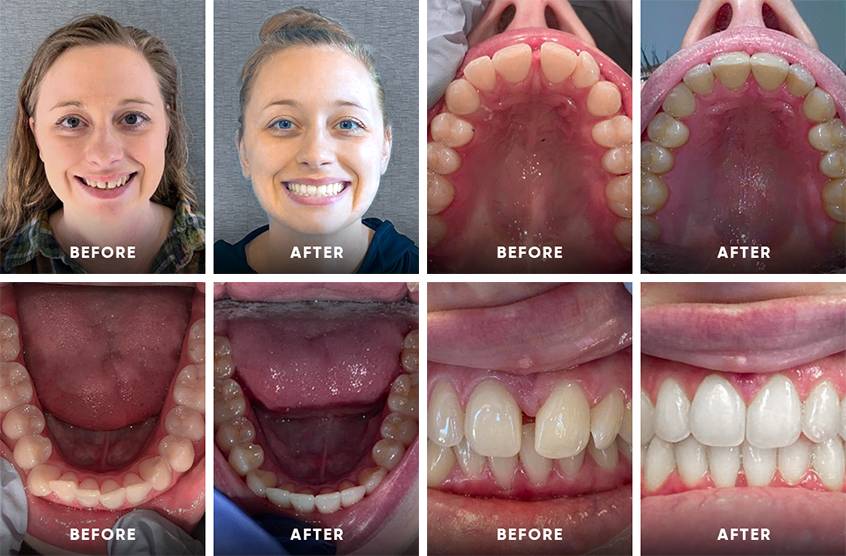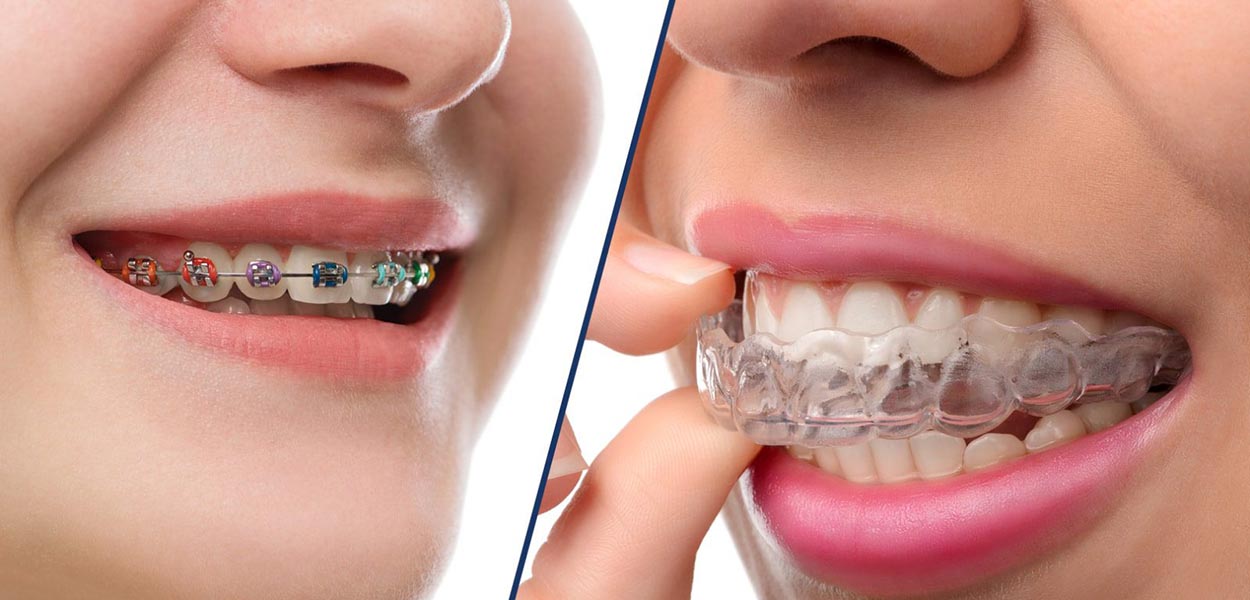Invisalign for Teens: A Modern Solution to Straightening Young Smiles
Invisalign for Teens: A Modern Solution to Straightening Young Smiles
Blog Article
Invisalign vs. Conventional Braces: Which Alternative Is Right for You?
When taking into consideration orthodontic therapy, the choice in between Invisalign and typical dental braces presents several crucial elements that merit cautious evaluation. Invisalign supplies a discreet option with detachable aligners, while traditional braces supply a more noticeable yet effective solution for serious misalignment. Each choice encompasses distinct benefits and downsides connected to visual appeals, comfort, therapy period, and price. Recognizing these subtleties is vital for making an educated choice that lines up with your individual choices and way of life. The inquiry stays: which alternative will best meet your orthodontic needs and expectations?
Overview of Treatment Alternatives

In comparison, typical braces are composed of steel braces and cables that are bound to the teeth. This method applies constant pressure with time to attain positioning. While reliable for complicated orthodontic concerns, traditional dental braces call for normal visits for modifications and can present challenges in maintaining dental hygiene due to the problem of cleansing about cords and braces.
Both choices have their qualities, and the choice typically depends upon particular dental problems, way of living choices, and patient conformity. Ultimately, seeking advice from an orthodontic specialist is vital for identifying the most suitable therapy strategy tailored to individual demands. Comprehending the nuances of each option can significantly influence the general success of orthodontic treatment.
Aesthetic Considerations
A substantial factor influencing the option in between Invisalign and conventional braces is the visual allure each therapy provides. Invisalign aligners are crafted from clear plastic, making them basically undetectable when used. This discreet look is specifically appealing to young adults and grownups that may really feel uneasy concerning their orthodontic treatment. The capability to preserve an all-natural smile throughout the alignment process can dramatically improve the patient's confidence in specialist and social settings.
On the other hand, standard dental braces contain steel braces and wires, which can be extra noticeable. While innovations in orthodontic technology have actually caused the development of smaller braces and colored elastics, typical braces still maintain a more conspicuous account. For some individuals, the presence of dental braces may deter them from looking for essential treatment.
Ultimately, the choice between Invisalign and conventional dental braces may depend upon individual preferences pertaining to appearances. Clients who focus on discernment typically favor Invisalign, while those that are much less concerned about presence may select traditional dental braces. Understanding the visual ramifications of each option is crucial for making an informed choice that aligns with one's way of life and preferences.
Comfort and Convenience

In terms of comfort, Invisalign aligners are detachable, enabling people to enjoy their preferred foods without limitation and More Bonuses maintain optimal dental hygiene. Brushing and flossing are streamlined, as the aligners can be obtained during these regimens, whereas standard dental braces need cautious steering around braces and cables.
In comparison, conventional dental braces require routine adjustments, making them less convenient for those with hectic schedules. Generally, the comfort and benefit of Invisalign make it an attractive choice for numerous people seeking orthodontic treatment.
Treatment Duration and Performance
While both Invisalign and typical dental braces are reliable in remedying dental imbalances, the period of therapy can vary considerably helpful hints in between the two alternatives. Generally, Invisalign therapy can take anywhere from 12 to 18 months, depending upon the complexity of the case. The clear aligners function by progressively shifting teeth right into their desired settings, and normal follow-ups with an orthodontist assistance guarantee progress stays on the right track.
In comparison, standard dental braces typically need a longer dedication, typically varying from 18 months to 3 years. This is due to their set nature and using brackets and cables, which can be a lot more efficient for intricate cases and serious imbalances (Invisalign). The therapy effectiveness of conventional braces is well-documented, as they enable for exact changes and greater control over tooth motion
Eventually, the choice between Invisalign and traditional braces may hinge on both the expected therapy period and the details dental concerns handy. Consulting with an orthodontist is critical, as they can offer customized referrals based upon individual requirements, guaranteeing the picked method straightens with preferred durations and results.
Cost Contrast and Insurance Coverage Options
Expense plays a considerable function in the decision-making process for people taking into consideration orthodontic treatment, whether going with Invisalign or conventional dental braces. Typically, the price of Invisalign varieties from $3,000 to $8,000, while typical braces normally set you back between $2,000 and $6,000. Aspects affecting these costs include the intricacy of the situation, the period of therapy, and geographical area.
Insurance policy coverage can substantially affect out-of-pocket expenses. Numerous dental insurance policy strategies supply partial insurance coverage for orthodontic therapies, yet the specifics can vary widely. It is essential for people to examine their insurance plan to establish the degree of coverage for either choice. Normally, standard braces may be extra regularly covered by insurance coverage plans contrasted to Invisalign, which some insurance providers categorize as an aesthetic treatment.
Additionally, numerous orthodontic practices offer adaptable payment plans, making both treatment alternatives a lot more accessible. People ought to inquire concerning potential financing choices and click site discounts for in advance settlements. Reviewing the overall price, consisting of insurance benefits and payment strategies, is vital for making a notified choice that aligns with both aesthetic choices and spending plan factors to consider.

Conclusion
In recap, the choice between Invisalign and traditional braces depends upon multiple elements, including visual choices, convenience, treatment duration, and price. Invisalign uses a very discreet, removable choice that facilitates dental health and dietary adaptability, while typical dental braces might be preferable for complicated dental problems and commonly come at a reduced cost point. Inevitably, assessment with an orthodontist is vital to evaluate private conditions and figure out one of the most suitable treatment option for achieving optimum oral positioning.
When taking into consideration orthodontic therapy, the option between Invisalign and typical dental braces offers a number of crucial factors that merit careful assessment.Comparing Invisalign and typical braces discloses unique treatment alternatives for orthodontic correction.While both Invisalign and conventional braces are reliable in correcting dental imbalances, the duration of therapy can vary dramatically in between the 2 choices.Cost plays a substantial role in the decision-making procedure for individuals taking into consideration orthodontic treatment, whether opting for Invisalign or standard dental braces.In recap, the choice between Invisalign and standard braces pivots on numerous factors, consisting of visual choices, comfort, treatment period, and expense.
Report this page